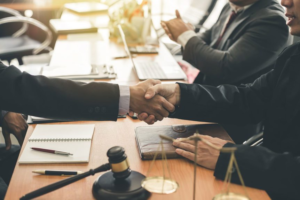A gas leak isn’t just expensive – it can also be dangerous. This is why it’s important to know how to recognize the signs of a leak and when to call in professionals.

Attempting line repairs without the proper expertise can make matters even worse. This is why it’s important to follow certain safety procedures when working on your leaking gas lines. Keep reading the article below to learn more about Gas Leak Repair.
Gas leaks are a serious safety risk. They are a fire hazard and pose a risk of explosion. They can also poison the air and cause illnesses. This is why it is important to keep a close eye on the condition of your home’s gas lines and have them repaired as soon as possible.
The best way to spot a gas leak is to look for signs in the home or office. Since natural gas is odorless, service providers add a compound that smells like rotten eggs to help you identify the presence of leaks. This smell is strongest near the source of the leak. In addition, if you hear hissing or whistling sounds, this could be another sign of a gas leak.
It is also a good idea to inspect the area around the gas line. If you see plants or grass that are dying, it might be due to a gas leak. This is because escaping gas deprives the soil and plants of oxygen, leading to their untimely death.
If you notice any of these symptoms, shut off the gas supply at the main valve and move away from the affected area. It is a good idea to open windows and doors for ventilation as well. You should also avoid using any electrical appliances, such as heaters or ovens. This is because any sparks can ignite the leaking gas and cause a fire.
Besides the obvious safety hazards, gas leaks also have significant economic implications. For instance, if a pipe is leaking methane, it can trap heat at a faster rate than carbon dioxide and contribute to climate change and global warming. For these reasons, investing in timely gas leak detection and repair is a great idea for both residential and commercial properties. However, if you are not aware of how to detect a gas leak or what to do when one occurs, it can be dangerous for your family or employees. To minimize the damage, you should hire a professional plumber to conduct a thorough inspection and repair the pipes.
Repair the Pipes
When a gas leak is discovered, you need to take immediate action. The first step is to evacuate the area. This will help prevent exposure to the gas and ensure that everyone stays safe until professionals can safely inspect the premises. You should also inform your neighbors, especially if they live in close proximity to your home or business.
Once you’ve moved to a safe distance, call a plumber that specializes in gas line repair. They can provide the proper tools and equipment to locate the source of the leak. Using specialized testing equipment, they can determine the location of the leak and shut off the supply. They can also replace damaged appliances to ensure that the gas is flowing correctly and that there are no additional leaks.
Depending on the severity of the leak and its location, it can take anywhere from one hour to 24 hours for a professional to arrive and complete repairs. This is because the pipes are located underground and may be difficult to access. During this time, you should not use any gas-related appliances or light anything on fire. If you notice any physical symptoms such as chest pains or dizziness, seek medical attention immediately.
Another important part of gas leak repair is preventing further damage to the pipes. Oftentimes, this can occur due to age or physical wear and tear. In other cases, leaks can be caused by excavation activities, improper installations, or even natural disasters like hurricanes. Additionally, methane from leaking natural gas lines can deprive local ecosystems of oxygen, which impacts wildlife and vegetation.
To stop the leak, a plumber will start by removing any covers that protect the pipelines. Then, they will detach the gas line from the regulator to relieve the pressure in the pipelines. After that, they will inspect the pipelines for signs of damage or corrosion. If necessary, they will replace the affected pipe sections to avoid further leaks.
Once the pipelines are repaired, they will reattach the gas regulator and test the line to ensure that the leak is completely fixed. If everything checks out, the professional can turn the gas back on and allow you to return to your normal life.
Test the Affected Area
If you suspect a gas leak, make sure everyone in the household is evacuated to a safe location. This will help to reduce exposure to the leaking gas and prevent fatal consequences if the gas ignites. Keep your family prepared to recognize the signs of a gas leak by having carbon monoxide detectors installed and educating them on how to respond to potential dangers. It’s also a good idea to have a professional inspect your appliances and pipelines on a regular basis.
It can be difficult to detect a gas leak due to its odorless nature. However, natural gas suppliers add a chemical known as mercaptan to the gas in order to create an unmistakable rotten egg or sulfur smell that can alert homeowners of a problem. In addition, it is common to hear hissing or whistling sounds near areas where gas lines run. These noises are a clear indication that there is a problem and the gas line should be shut off immediately.
Inhalation of natural gas can lead to a variety of health problems, including headaches, dizziness, nausea, weakness, and even suffocation. It can also cause an abnormal heartbeat and affect the nervous system, making it essential to have any suspected problems resolved as soon as possible. A slow leak that goes undetected for a long time can also deprive your home of oxygen, which could cause your houseplants to die or create unusually high utility bills.
A quick response to the sign of a gas leak is crucial, and so is getting professional gas leak detection repair service as quickly as possible. Once a professional locates the source of the leak using specialized tools, they will be able to shut off the gas supply and then repair or replace the affected pipes.
A gas leak can be a dangerous and potentially deadly problem, but with a few simple steps, you can protect your family’s safety and avoid costly repairs. Turn off the gas, evacuate the area, and do not use any electrical devices or light switches until a professional has declared it safe to return.
Evacuate the Building
Over 73 million premises in the United States operate on natural gas, and while this fuel is generally safe when it’s properly installed and maintained, gas lines can leak. When this happens, the leaking gas is a fire hazard and poses a significant threat to people in the building. Knowing how to react when you suspect a gas leak will help ensure your safety and the safety of those who live or work in the affected premises.
The first step in a suspected gas leak situation is to evacuate the premises. If possible, this should be done without delay; every minute counts when it comes to a potential disaster. Evacuating the building will allow the escaping gas to disperse, reducing the risk of an explosion and preventing the formation of toxic fumes. Those who are evacuating should do their best to avoid using electrical switches, phones, or any other type of ignition device.
Attempting to search for the source of the gas leak will also put occupants at risk, and they should not try to locate the leak until trained professionals have given them the all-clear. If you are unsure whether you should evacuate the building, or have any doubts about how to proceed, call your local authorities and ask them for guidance.
When you have successfully evacuated the building, you should also make sure that the area is clear of any combustible materials, such as leaves or trash. Any combustible material present could ignite as a result of the gas leak, so it’s essential that you dispose of these items as quickly as possible.
It’s also a good idea to identify any emergency assembly points for the building, especially if it’s located in a high-rise. This will help people find their way out of the building if a fire does break out. When evacuating the building, those who are in it should leave all doors open to allow the escaped gas to escape as well.
Regular professional inspections are essential for ensuring that your gas lines are in good condition. Licensed technicians will know all the rules and regulations for working safely around natural gas, so they won’t be at risk of committing violations that could lead to dangerous consequences. They will also be able to advise on preventing gas line leaks by conducting routine checks.








